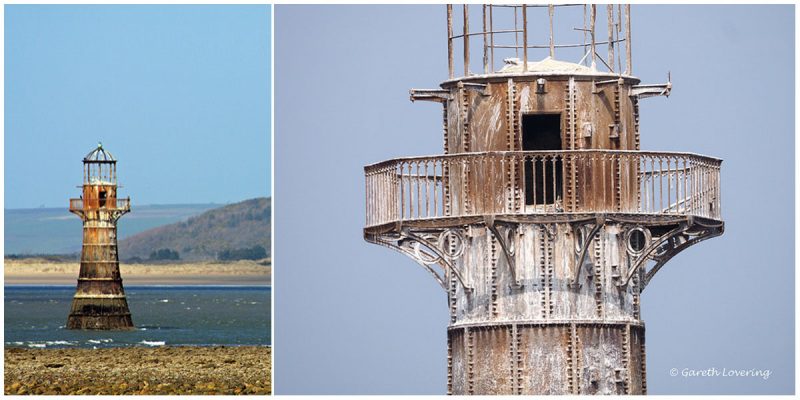Whiteford Point Lighthouse is an unusual cast-iron lighthouse built in 1865 to a design by John Bowen of Llanelli and Burry Navigation Commissioners. It is located off the coast at Whiteford Point near Whiteford Sands, on the Gower Peninsula in South Wales.
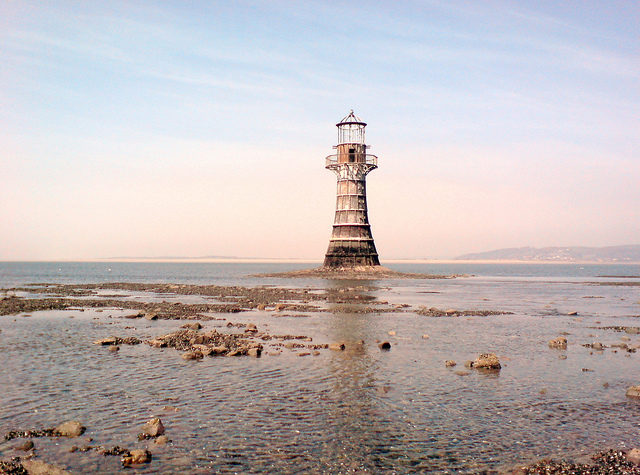
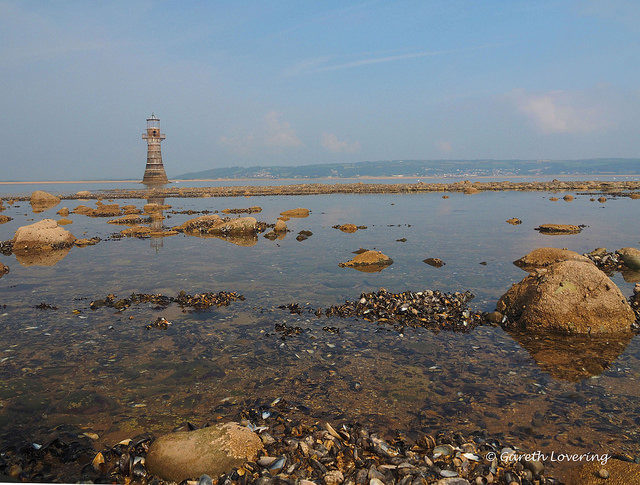
It is the only wave-swept cast-iron tower of this size in Britain. It sits on 88 wooden piles driven into glacial moraine. The tower is 44 feet high, has a single room, and stands just above low-water level about 0.5 miles from the shore. It is made mostly of metal and still looks very solid considering the time it’s been abandoned to the sea.
It was constructed with eight cast-iron plates bolted together with external and internal flanges, with bolts weighing around 900g. The external flanges are an unusual feature, not seen on other cast iron lighthouses.
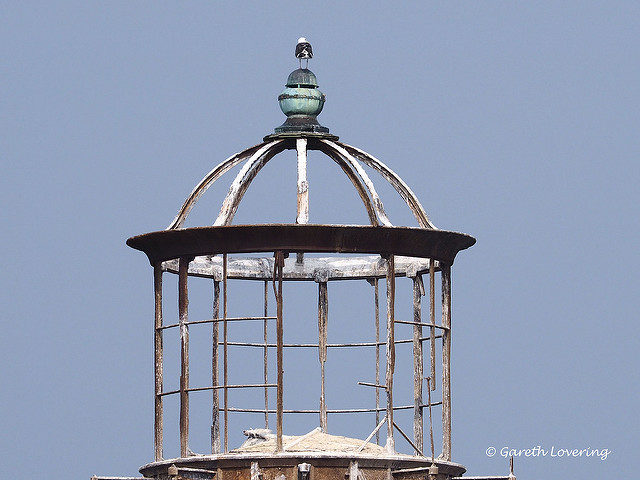
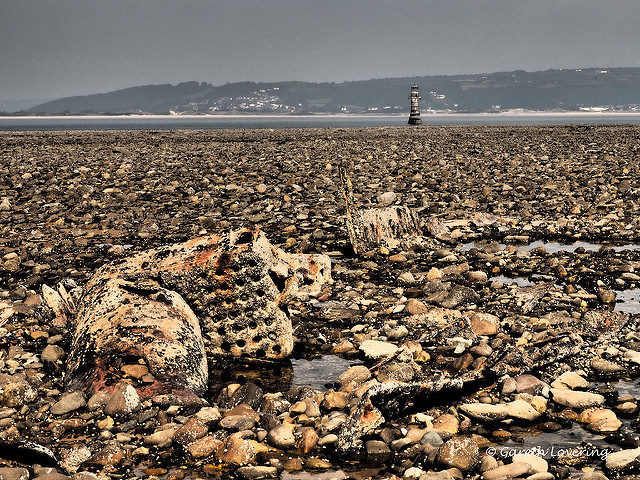
It is an important work of cast-iron architecture. The base is about 24 feet in diameter and rises to a diameter of 11 feet 6 inches at lantern level. A pitched stone apron surrounds the base of the lighthouse.
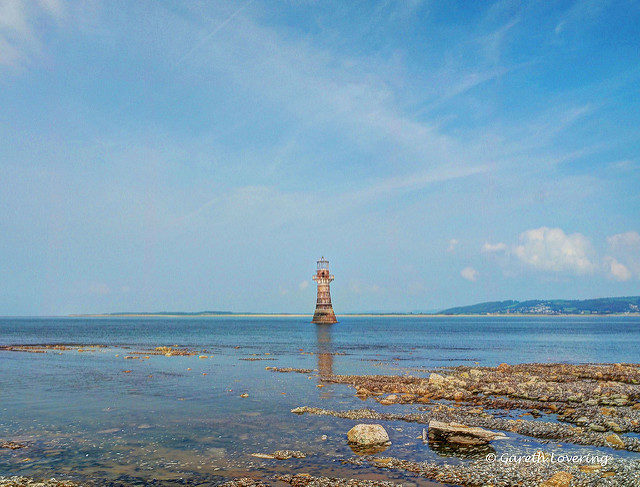
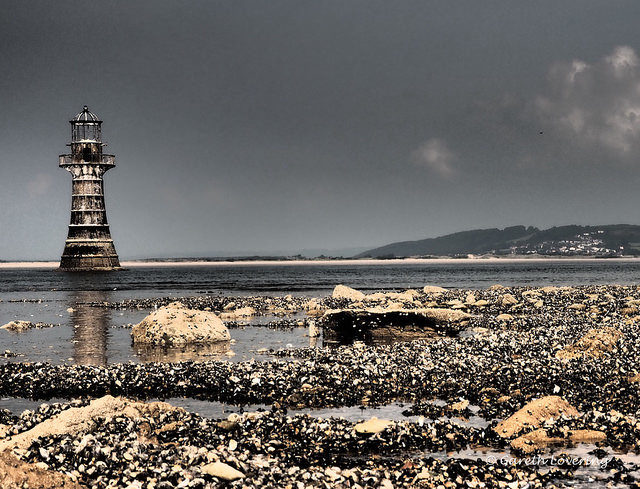
In 1854, Burry Navigation Commissioners replaced an earlier piled structure, of which nothing remained, to mark the shoals of Whiteford Point. The light marked the shoals and guided shipping in the estuary and the harbors of Burry Port and Llanelli.

The lamphouse had three Argand lamps and reflectors were also fitted. In 1876, the Harbour Master set a fourth lamp to shine west along the north channel, but the light was removed and not replaced after a failure of the solar unit.
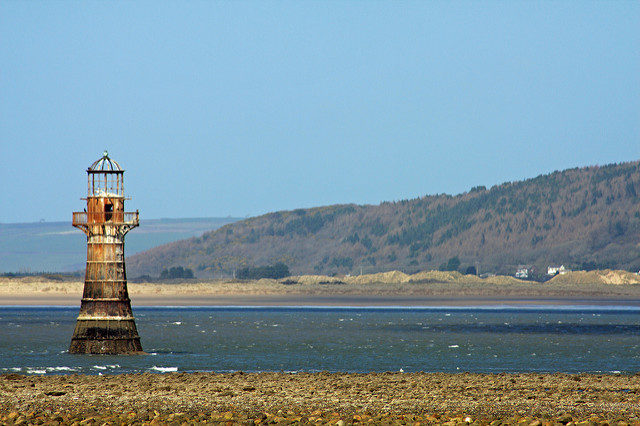
The tower remained in use until 1921, when its light was extinguished. However, to this day the lighthouse still has navigational value in daylight.
